Braised lamb shank recipe that delivers perfect fork-tender meat every time. Plus – how to make a rich, flavorful gravy from the braising liquid.
Go directly to the Recipe Card or
Read on for useful, relevant information, step by step pictures and a short video about how to braise lamb shanks (3 mins read).
What is a Lamb Shank?
Lamb shanks are bone-in portions of meat cut from either a forequarter or a hindquarter of the animal, just below the leg and above the joint that connects it to either the shoulder or the leg bone. Naturally, there are two types.
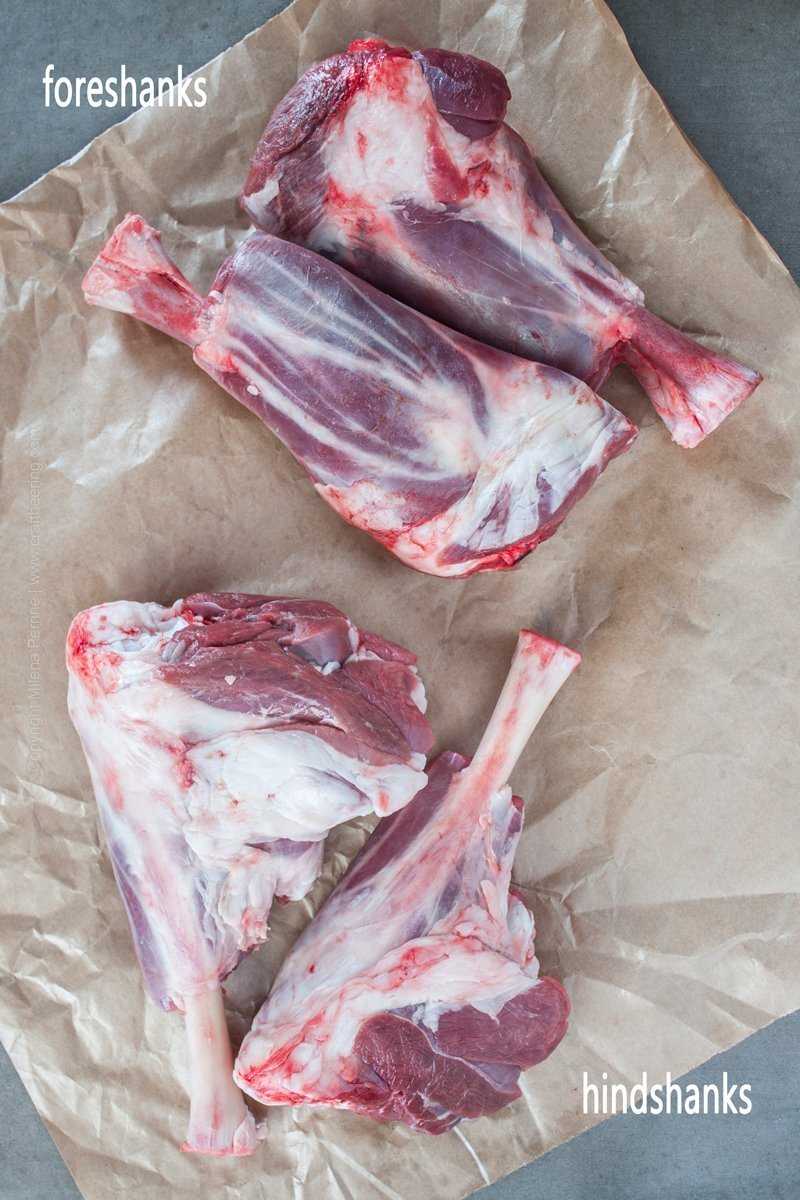
Frenched lamb foreshanks next to lamb hindshanks.
Lamb foreshanks are cut from the front quarters of the animal. They tend to be smaller than their hind counterparts and on average weigh under a pound. They have a sweet, dense flavor. Also known as forequarter shanks.
Frequently they include part shoulder and part leg meat. They contain parts of the radial bones, the adjacent ulna, carpus and a distal portion of the humerus bones. When cooked the portion of the humerus bone becomes exposed as the meat pulls away.
Lamb hindshanks are cut from the back legs of the animal. They tend to be larger and have a better bone to meat ratio (more meat). Typically a single one weighs over a pound and when cooked can serve two. Also known as hindquarter shanks or drumstick shanks.
The meat is strictly from the lamb leg and typically only a leg bone is included (tibia). Its bone marrow is delicious and contributes tons of flavor to braising liquids.
For both types of lamb shanks frenching is common. To create a pleasing visual effect the meat and connective tissue are trimmed (frenched) to expose a part of the bone.
Where to Buy Lamb Shanks
Your best bet is to visit a local butcher and place an order with them. The meat will be fresh and you can request the type of lamb shanks you prefer (some prefer the meatier hindshanks while others would rather get the smaller foreshanks in order to serve them individually).
The meat we purchased for this post included all four shanks of a single animal – our butcher had just received it and cut them and trimmed them for us. We asked for more or less uniform weight cuts regardless of type.
Well stocked meat departments within grocery stores typically carry frozen lamb shanks, especially during the busiest lamb cooking seasons – the winter holidays and spring time, definitely around Easter.
In bigger cities Asian grocery stores are also a great option if you live nearby one, they seem to stock lamb shanks year-round.
And of course there are many online butcher options.
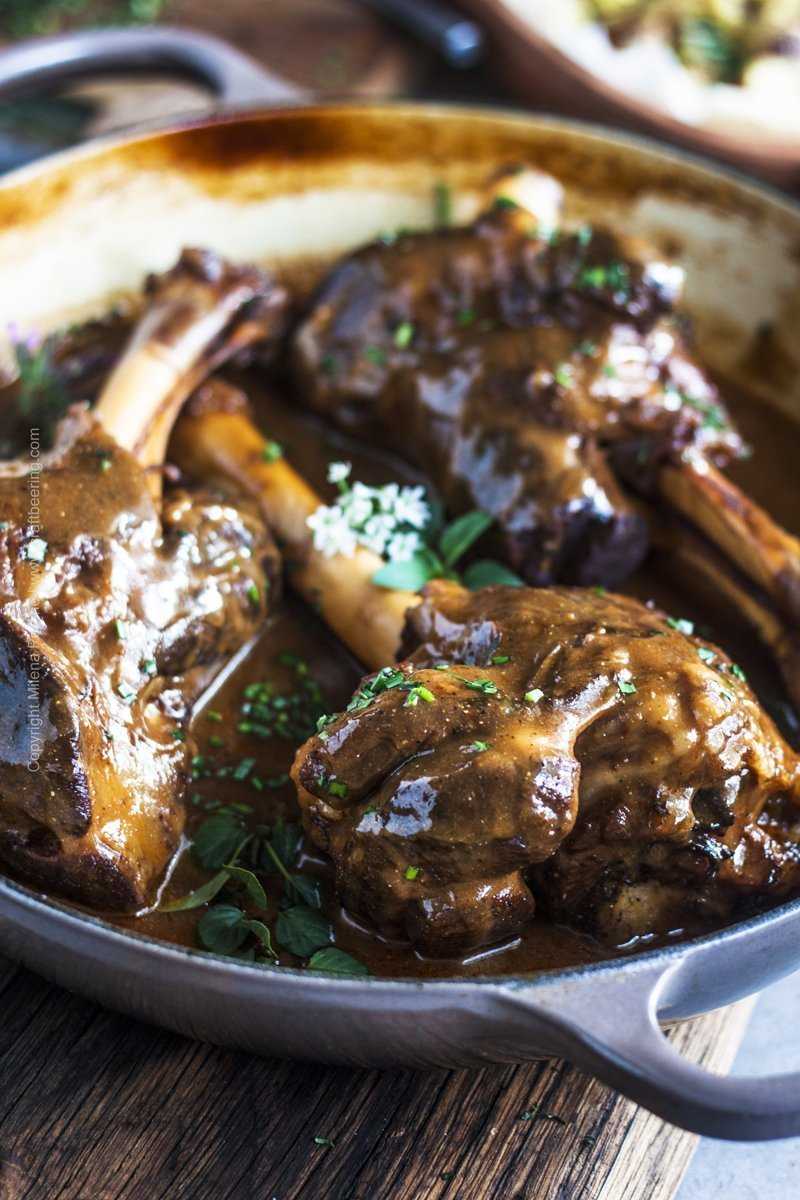
Perfectly braised lamb shank with fall-off-the-bone tender meat.
How to Cook Lamb Shanks in Oven
Lamb shank recipes usually call for low and slow cooking. This tough cut of meat is rendered tender and juicy, the attached connective tissue melts away and yields its collagen, the bone marrow and the fat impart deep flavors.
For best results either slow roast or braise lamb shanks. We are very partial to braising and the subject recipe delivers succulent meat with a richly flavored sauce. Conceptually it is a very straight forward, classic braising recipe Chris has used again and again at work and taught me to use at home.
At the same time it is a lamb shank recipe that gives you plenty of leeway to tweak the overall flavors by choosing different spices, herbs and a liquid base to create a flavorful braising liquid that tastes the way you’d like.
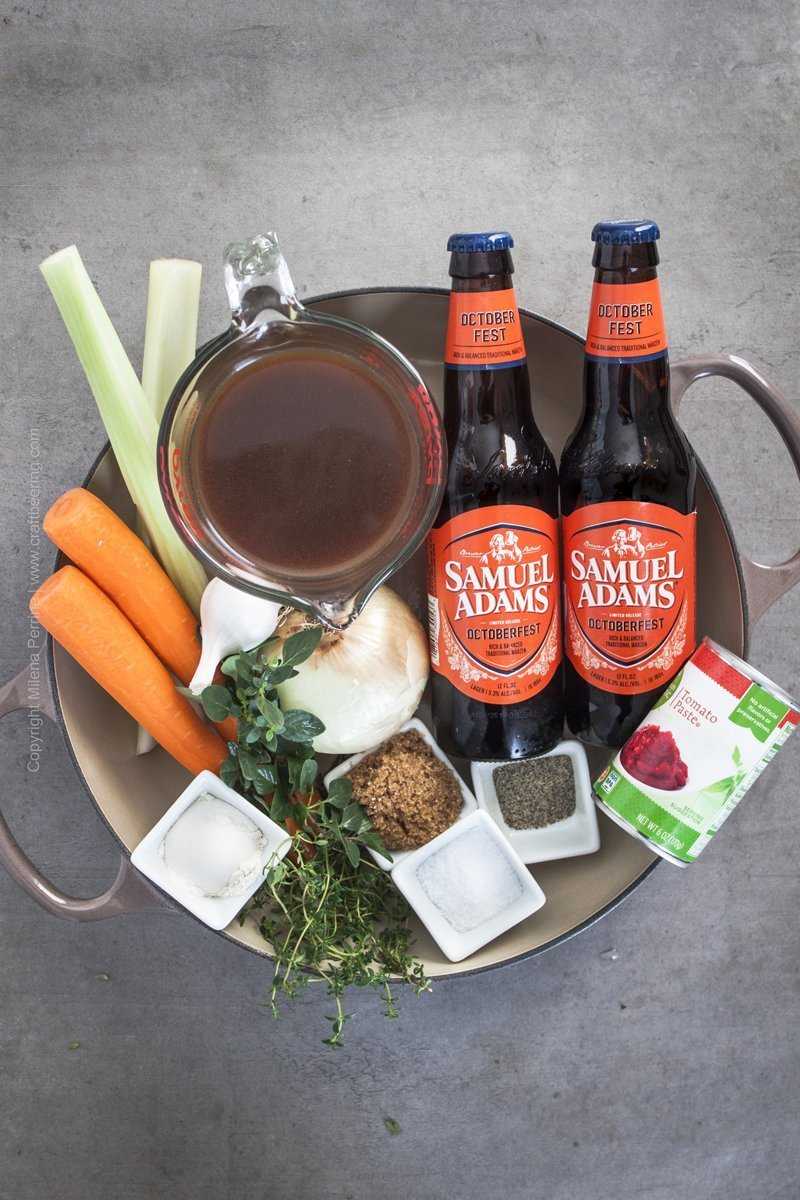
Braised lamb shanks are a classic dish served at the Wiesn in Munich during Oktoberfest. When seasonal Marzen lagers are available we love to use them in the braising liquid, otherwise rich, spicy red wines or porter ale are our top choices.
Braised Lamb Shanks Ingredients
Lamb shanks. Already discussed in detail above, but it is worth noting that you don’t always need to budget a lamb shank per person (some hindshanks can weigh close to 2 lbs). Rather, go by the actual meat on the bones.
Oil, salt and pepper. We prefer olive oil to brown the shanks and season them liberally with salt and pepper. Use good quality coarse salt, not the iodized table version.
Vegetable base. To create a flavorful braising liquid you need to start by softening some vegetables. In this recipe we use carrots, celery ribs, onions (aka mirapoix) and several garlic cloves. You can also use leeks, shallots, green peppers, fennel.
Acidic ingredient. Tomato paste (used here) or a vinegar, such as apple cider or balsamic are typical. Balsamic in combination with porter ale (see Flavorful liquid below) creates a show-stopping dark gravy. Dry red wine such as cabernet sauvignon or pinot noir is a good option too.
Flour. It is used as a thickener.
Flavorful liquid. Wine (both red and white), beer (lagers or ales), and hard apple cider are among the most popular ones used. Sometimes fortified wines such as port, sherry and spirits like brandy are added in small(er) quantities:). Note that wine is much more acidic than beer so use vinegars sparingly or not at all in combination with it.
Stock. Typically beef stock, but if you don’t have any around use vegetable broth or chicken stock.
Sweetener. To create balance use a bit of sugar (we prefer brown sugar) or maple syrup or honey. Fruit is often added to the braising liquid- raisins, plums, dates.
Herbs, spices and seasonings. In this recipe we use fresh thyme, bay leaf and cumin. Oregano, rosemary and sage are great choices. You can also use the rich spices of the Middle East (cardamom, coriander, cinnamon, clove, nutmeg, star anise, even dried rose petals). A great strategy is to select spices that complement the aromas of the wine, ale, cider or spirit of your choice.
Mustard and slurry. Optional – if you want to make a gravy from the braising liquid. You will need a bit of mustard to act as an emulsifier (we recommend Dijon, it goes with soo many flavors) and a slurry (mixture of cornstarch and cold water) to act as a thickener.
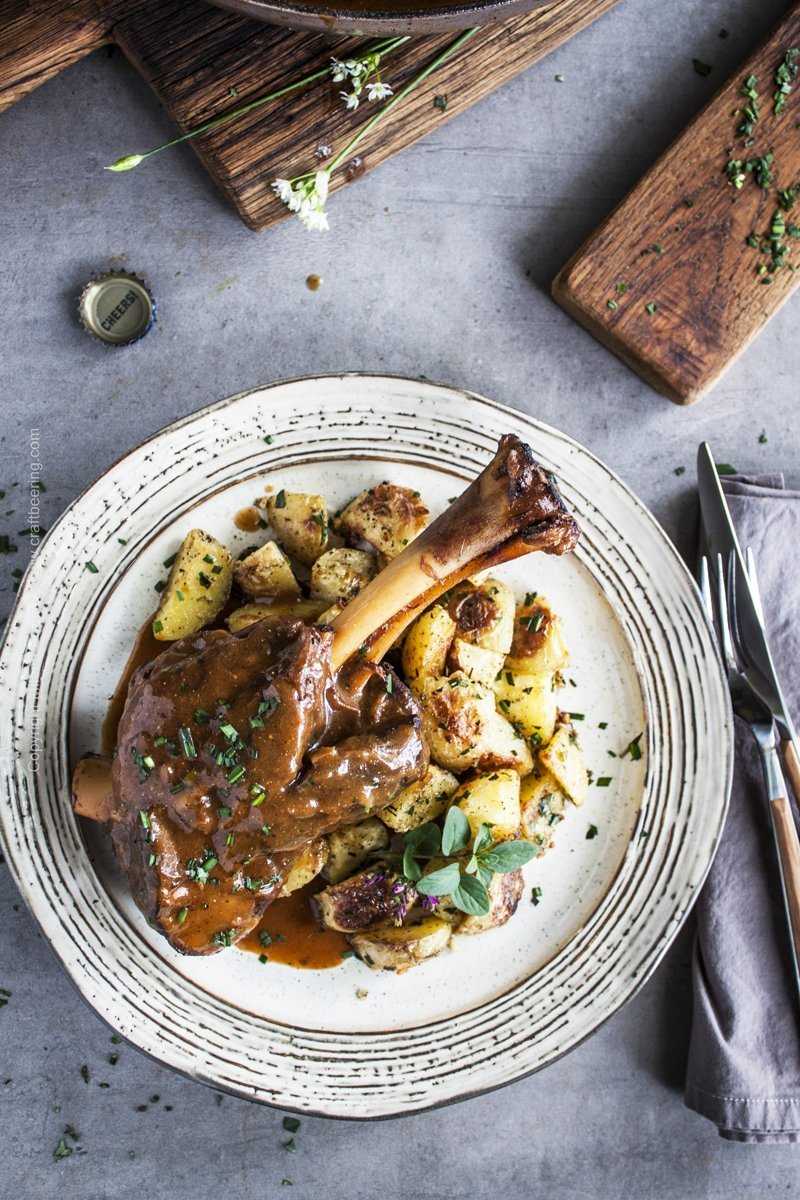
Marzen beer braised lamb shank served bone in.
Braised Lamb Shanks Step-by-Step
To braise lamb shanks you first need to sear them and then slow cook them in flavorful liquid, tightly covered so no moisture can escape.
- Roughly chop your vegetables, pat dry the lamb shanks and season them nicely with salt and pepper.
- Add olive oil to a large pan over medium-high heat (or straight into the braiser/Dutch oven you will be using) and brown them on all sides. Work in batches then remove temporarily.
- Add the chopped vegetables to the same pan, stir and cook until soft and then add flour and tomato paste, mix.
- Deglaze the bottom of the pot with beer/wine/cider, scrape off the brown bits, add the beef broth, sugar, herbs and spices.
- Next return the browned shanks, bring to boil, cover tightly (lid or tin foil if using a roasting pan) and place in a 275 F – 300 F oven. Our oven is a bit strong so we go with 275 F for two and a half hours. They should only simmer in the braiser.
- Check the shanks around an hour and a half in and probe with a fork to judge the tenderness. Smaller shanks might be already very tender and the meat almost falling off the bones.
- When satisfied with the tenderness of the meat, take them out and very carefully remove the shanks from the liquid so as the meat does not fall off. You can cover them with foil to keep them warm.
NOTE: Measuring internal temperature is largely irrelevant in the case of braising. Even though lamb meat is cooked medium-well at 145 F the shanks will not be even close to the succulent, tender state they can reach after prolonged slow cooking. Simply don’t worry about the temperature and braise the shanks until they reach your desired tenderness.
How to Make a Gravy from the Braising Liquid
The image sequence below shows how easy it is to convert the braising liquid into a silky, gravy-like sauce.
- Begin by skimming the fat floating on top of the braising liquid with a spoon. Discard it.
- Next strain the pan juices and pour them back in the pan. Discard the vegetables and herbs.
- Add Dijon mustard to the juices, bring to boil, add slurry and mix to thicken.
- Finally add the shanks back and smother them with sauce (if you want to serve family style, otherwise transfer the gravy to a serving gravy boat).
Braising Alternatives
If you do not have a braiser or Dutch oven you can prepare perfectly braised lamb shanks
- in a roasting pan by tightly covering it with a double layer of aluminum foil (to prevent moisture from escaping) or
- large slow cooker, using the high setting
In both instances you will begin by browning the shanks and creating the braising liquid in a large pan on the stove top. See recipe for details.
Customize the Braising Liquid Flavors
As I touched upon while discussing the key ingredients above, the braising liquid you create can be infinitely customizable. Besides the several ideas I mentioned you can also prepare lighter, Mediterranean inspired spring time versions of the dish.
To do so employ bright flavors from both the herbs and the liquid in which you will braise. For example a sweet white wine with citrus notes and preserved lemons, rosemary and garlic, some honey or sultanas for balancing sweetness.
The possibilities are truly endless.
How to Serve a Braised Lamb Shank
- Serve each shank individually, bone-in for an impactful presentation or
- Simply strip the meat from the bones with a fork, arrange it on a serving platter, smother it with gravy and present it that way.
We love the first approach but truth be told we rarely eat all the meat, especially in the case of larger hindhsanks. Leftover meat makes for tasty gyros if reheated or can be added to bean stews or cooked lentils.
Garnishing with fresh herbs brings color to the dish and creates visual appeal (I have to admit that even though crazy delicious, gravy is not exactly delightful to look upon).
Compatible Sides
There are so many options for sides that I’ve named only the most popular ones.
As a rule of thumb – plan for a side that is compatible with the overall flavors of the braising liquid.
- mash potatoes or crispy potatoes
- roasted root vegetables – turnip, sweet potatoes, beets
- roasted cauliflower or cauliflower mash
- polenta
- couscous
- rice pilaf with raisins and/or plums
- roasted chickpeas and diced butternut squash
Garnish with finely chopped herbs such as fresh parsley or chives.
Other Recipes You Might Like
Guinness Lamb Stew
Lamb Shoulder Chops
Oven Lamb Sirloin Chops
Lamb Steaks
Smoked Leg of Lamb
Pilsner and Feta Cheese Lamb Meatballs
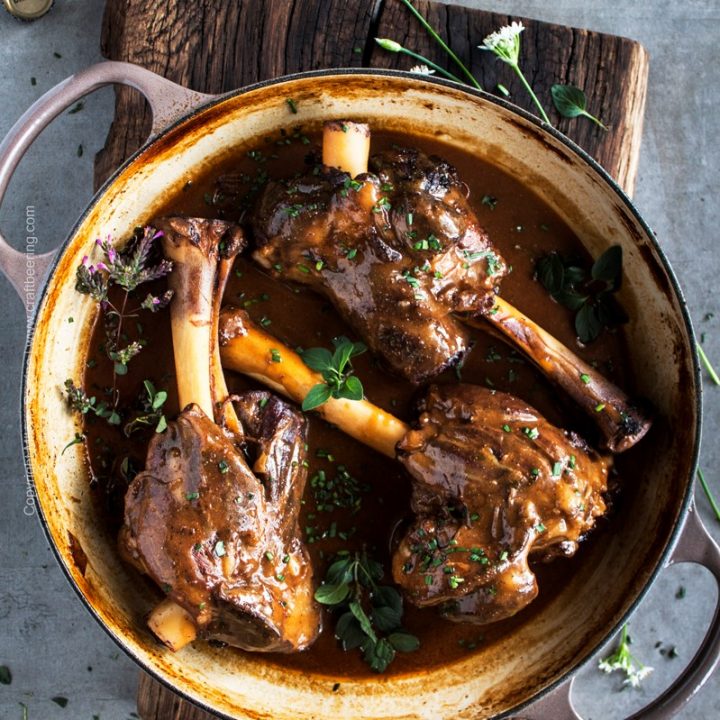
Braised Lamb Shanks with Gravy
Slowly cooked lamb shanks are braised in a delicious beer infused liquid until fall-off the bone tender. The braising liquid is then transformed into a silky, scrumptious gravy-like sauce. Oven method with a crock pot variation.
Ingredients
- 3 lamb shanks*
- 1 1/2 tbsp coarse salt
- 2 tsp ground black pepper
- 2 tbsp olive oil or vegetable cooking oil
- 1 yellow onion
- 2 carrots
- 2 celery ribs
- 1-2 tbsp tomato paste
- 4 garlic cloves
- 1 tbsp flour
- 18 oz flavorful lager or ale (Marzen, dunkel or porter) or red wine such as Shiraz or Chianti
- 2 cups stock (beef or vegetable)
- 2 tbsp dark brown sugar
- 2 bay leaves
- 1 tbsp cumin
- 2 tbsp dried thyme or 8-10 sprigs fresh
- 1 tbsp Dijon mustard (for gravy)
- 1 tbsp corn starch + 2 tbsp cold water to make a slurry (for gravy)
Instructions
For Braiser or Dutch Oven
1. Preheat oven to 300 F (use 275 F if your oven is really strong).
2. Clean and rough chop all the veggies and garlic and set aside. Pat dry the lamb shanks and season them well with salt and pepper.
3. Heat oil over medium-high heat in the braiser/Dutch oven (or a large heavy skillet) and sear the lamb shanks for about 2-3 mins on each side. Work in batches. Remove when nicely browned and set aside.
4. Lower the heat to medium and add the veggies and garlic, stir them and let them soften for 4-5 minutes. Add the flour and the tomato paste, stir and cook for one minute.
5. Deglaze with beer or wine, scrape all the brown bits from the bottom of the braiser (pan). Add the beef stock, the bay leaves, the thyme, the cumin and the brown sugar. Stir well, then place the lamb shanks into the liquid and increase the heat to bring to boil.
6. Cover with lid and place in the oven for about 2 hours. Check them to see how tender they have become about an hour and a half in and braise for as long as needed after that, until they reach your desired tenderness.
7. When the lamb shanks are done, remove them from the braising liquid (carefully, the meat will be very tender) and let them rest for a few minutes. Cover with aluminum foil to keep warm if needed.
For Slow Cooker
1. Use a large, heavy skillet and complete steps #2 thru #5 from the Braiser/Dutch oven method above.
2. Very carefully transfer the braising mixture and the shanks to your slow cooker and cook on high until they reach your desired tenderness.
To Make a Gravy
1. After removing the shanks skim the fat on top of the braising liquid with a spoon and discard. Strain the vegetables and herbs using a sieve and discard them, reserve the liquid.
2. Heat the same pan where you cooked the shanks over medium heat, add the strained juices and the Dijon mustard and bring to simmer. Whisk to incorporate. Mix 1 tbsp corn starch with 2 tbsp cold water and add to the boiling liquid. Stir to thicken. Remove from heat.
Transfer to gravy boat or place shanks back in to serve family style.
Notes
*Note that the meat of 3 lamb shanks, especially if they are the larger hindshanks is sufficient to serve 3 to 6 people, depending on their size.
Recommended Products
We are affiliates for Amazon and other vendors and qualifying purchases you make support our blog at no cost to you.
Nutrition Information:
Yield: 3 Serving Size: 1Amount Per Serving: Calories: 715Total Fat: 28gSaturated Fat: 7gTrans Fat: 0gUnsaturated Fat: 19gCholesterol: 95mgSodium: 3997mgCarbohydrates: 45gFiber: 6gSugar: 16gProtein: 33g

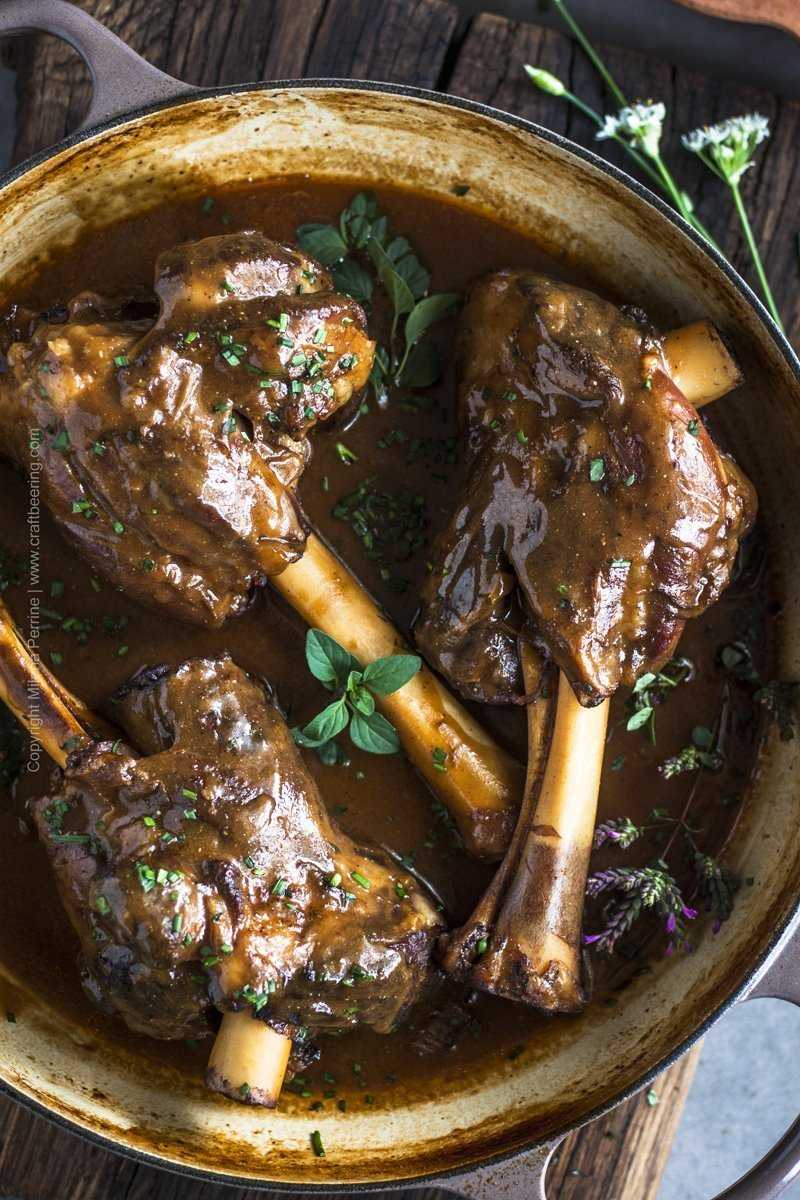



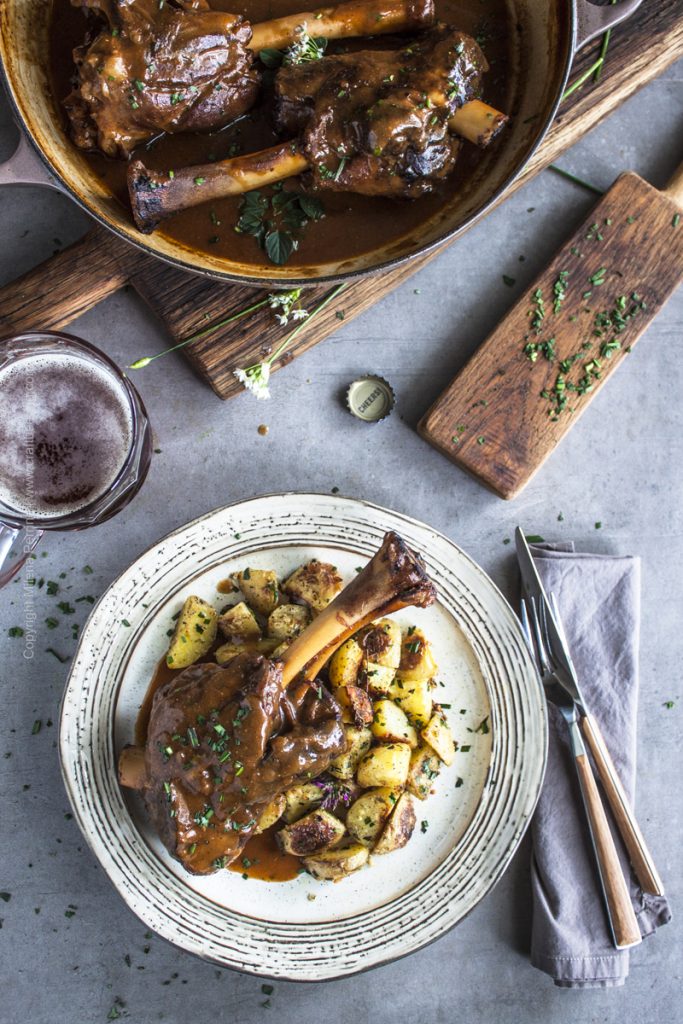
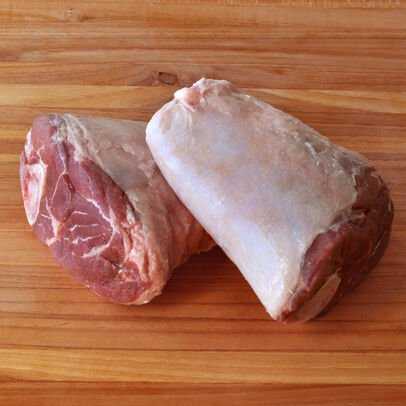
Hind says
So good , easy . Gravy so creamy and delicious, thank you
Milena Perrine says
So glad you enjoyed your dish, Hind!
afra says
Made this for a German themed dinner party with Rotkohl and Semmelknödel. First time for me cooking lamb shanks and I cannot believe how easy it was. And how forgiving this recipe is. My guest were late so I had to keep the meet warm for over an hour – and it was still fabulous! Thank you so much for the recipe and all the detailed information!
Darrin says
Hi there…I see in your recipe you used an amber lager. Would this recipe work with Guinness for a darker hue to the sauce?
CraftBeering says
Darrin, it works great with Guinness, other stouts, porters and brown ales. Anything with roasted malt, absent creative twists such as vanilla, peanut butter etc.
Darrin says
Thank you for the feedback! What do you do with the vegetables after you strained the liquid to make the gravy? Do you simply discard them?
CraftBeering says
Yes, we do. They are only used to flavor the braising liquid.
Katherine | Love In My Oven says
We made these braised lamb shanks for Sunday supper last night and they were fantastic! Great recipe!!
CraftBeering says
So glad you liked the results! Classic recipes and techniques are always the best, aren’t they?
Jennifer @ Seasons and Suppers says
I have such a hard time finding shanks of any kind around here, so first, I’m jealous of your butcher 🙂 And if and when I ever get some hands on some, this will be what I’m going to make! Looks absolutely delicious.
CraftBeering says
Fingers crossed you do come across some lamb shanks soon:) We also used to have to order online or before we moved closer to civilization where we do in fact have a butcher in town, lol!
Kelsie | the itsy-bitsy kitchen says
I always think of braising as too fancy for me to do at home. You make it totally approachable! Have a great weekend, Milena and Chris!
CraftBeering says
Thank you, Kelsie! Agreed – it does sound fancy:) But actually relatively easy especially given the delicious results.